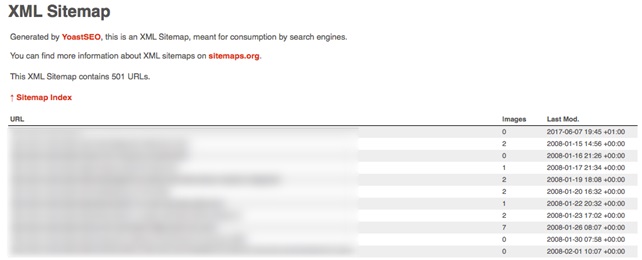
Every Google update has winners and losers, algorithm updates are a cornucopia of surprises. As they have progressed and evolved throughout the years, Google have gained an unprecedented control and in-depth knowledge of their index, making it impossible for us to understand or foresee to which extent the updates will change rankings and the dynamics of organic placement.
The first signs that Google was about to shake the SEO tree came back in March of this year when Danny Sullivan from SearchEngineLand.com stated:
“There haven’t been many talks about this update: probably because nobody really knew what was going on”.
Many experts believe this update is a diabolical combination of its predecessors, Panda and Penguin. Many observers noted sites that had a significant presence of advertising had lost rankings. The empirical evidence made it look like this was exactly the objective of the update. In reality many minor sites without advertising were badly hit as well: we’re talking about simple, “humble” sites that depend on their organic rankings for their bread & butter. These sites lost between 10 and 30 positions for their “money key phrases”, which ultimately brought in conversions. None of them presented any blatant signs from an SEO point of view.
The objective of this post is to offer insights and share corrective actions which are likely to help recover from the Fred Algorithm Update.
So you lost ranking after Google’s Fred update – now what?
Start from your backlink profile using Majestic.
From the login panel, open up Site Explorer. As you can see from the above screenshot, you can access the Flow Metric’s historical data. Here you can check if there have been any significant changes in your Trust Flow, which could have determined important changes in ranking over the past 18 months.
If this review doesn’t bring up any interesting data, you can always perform another test with Majestic:
- Open Site Explorer
- Create a report by accessing the advanced features
From the Report section, go to Analysis Options
From here, go to the Flow Metrics’ section
Set the Delta Trust/Citation to: Max
Set the maximum value between Trust Flow and Citation Flow to 10%
Process a new analysis and download the backlink profile.
What you now have is a list of all the links with a very low value of Trust Flow compared to the Citation Flow. These are the kind of links that usually lead to problems, however only a very experienced SEO can determine whether these links are toxic or not.
Depending on the outcome of your first analysis, it could be necessary to increase the Trust/Citation ratio and bring it up to 20%, and take a look at the additional low quality links.
“On Site” Analysis
The following shortlist should be enough to identify the most important factors to be reviewed in the first instance to recover from a Fred-Induced loss of rankings. Once you have found the critical areas, all you have to do is get down to work… I’ll admit, these tips may seem obvious in the eyes of an expert SEO, but the sites I have examined all present similar patterns and have reacted positively (a substantial increase in rankings over a period of 2 to 3 weeks).
The Google Search Console
This is where you should start. Fix all errors reported in the Google Search Console in the HTML Improvements section:
- Are there any duplicated TITLES/META DESCRIPTIONS?
- Are the TITLES/META DESCRIPTIONS to short?
These errors require immediate attention – these modifications are a great starting point as they give Google signals you have taken serious consideration to the optimisation of your website (note the fact I purposely avoided the use of the word penalisation).
Check the Structured data section: even if you aren’t currently using any, it is possible to find some errors generated by your CMS (this happens often with WordPress). You should take positive action here as well and remove any code which is generating Structured data errors.
Verify your sitemap, is it regularly updated? I’m assuming your website generates a sitemap – if you haven’t created one, do so immediately! You must be very careful here: your sitemap should be updated regularly and offer search engines the LASTMOD parameter.

If you are using WordPress, I suggest you implement this functionality which can be found in the YoastSEO plugin.
Why LASTMOD is important
LASTMOD provides search engines with a complete listing of all pages. More specifically, they provide information related to which pages have been recently updated and, by doing so, which pages should be crawled: without this key parameter search engines will have to guess which pages have been last updated. LASTMOD provides search engines with essential information to optimise crawl budget).
Images Optimisation
This is usually a weak spot. Each image has to be optimised – provide image dimensions and ALT TAGS!
Verify the website architecture
Always keep in check the number of pages present in Google’s Index by using the site special operator. Execute a full scan of your site by using tools like ScreamingFrog and compare the data – if there happen to be significant discrepancies between a ScreamingFrog crawl and the numbers provided by the site:command, a deeper analysis is required to identify and eliminate any unnecessary pages that Google may have indexed.
Speed Test
A simple speed test could reveal important information about the site’s performance, which will contribute to your site rankings.
Thoughts on Fred, the update
If your site lost a great deal of traffic after Google’s update and have researched the topic, you will have found many “expert” opinions offering contrasting conclusions and suggestions on how to fix things: if you ask 10 SEO experts you’ll find yourself with 10 different opinions. Knowing that I’m not the fount of knowledge in SEO, I confronted my ideas with some trusted SEO colleagues before engaging in any corrective actions. I too was confronted with a number of opinions and ideas: unfortunately, they tend to reflect personal experience, specialisation and background of each individual.
It’s not true that you have to have posts with at least 500 words to rank in Google’s first page.
As Fred is seen as an evil combination of Penguin and Panda, there are some which argue the loss of rankings is due to the fact that website posts are too “similar” to one another and because of this are identified as “nearly the same”, getting the site labelled as a site with thin content. Each site is different, therefore each case needs to be analysed separately. Sadly, there isn’t a universal solution. There are cases of sites where this general rule does not apply: for example websites rich in images.
Ranking and Search Advertising show Strong Synergy
They are two sides of the same coin: if organic ranking starts dimming, paid search will suffer as well. This was clearly shown by data I gathered after Fred’s release – another reason to invest in organic placement and website optimisation.
Social Media can’t offset the lack of SEO and Search Advertising
For those sites hit by Fred, after witnessing a downward spiral of visits generated by SEO, new and alternative channels were setup in Social Media. The segmentation and the characterisation of the audience had been meticulous. Social Media did generate many conversions; however these conversions did not produce the same level of personal interest as seen with contacts brought in via SEO/SEA. I believe the matter here is quite simple to point out: people seek the help of search engines because they are looking for something specific or they are trying to solve a problem. People that are on social media are often distracted and are in a more relaxed mood and state of mind. Quite often, the difference in the quality of contacts is so strong, you can tell a contact brought in with search from social media just by looking at how the request was written.
Do you want to rank organically? You have to earn it!
I recovered a few sites that slipped down onto the third page of Google for their “money keywords” after the Fred Update and it was not an easy job. These sites were previously well positioned and dominated the SERPs for quite some time and had survived previous Google algorithm updates. Getting them back meant putting in an enormous effort to overcome deficiencies found in areas of the site, mentioned in this post.
The message is clear: if you want to rank organically you must demonstrate your worthiness of a top position by covering ALL BASES: a half done job won’t do. This in essence is what I can say Fred is all about.
- Is metadata important in SEO? - October 30, 2023
- A Simplified Approach to Content Creation using NLP - May 11, 2023
- The unknown side of search: when words become numbers - November 18, 2020










